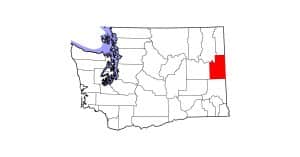Horses’ Facial Expressions of Pain Can Also Indicate Stress

While reading horses’ facial expressions has been gaining ground recently—primarily as a way to identify pain but also, to a lesser degree, stress—it might be difficult to determine what kind of “unhappy face” a horse is making. Knowing what the horse is feeling, though, can make an important difference in the way handlers and caretakers manage the problem, said Johan Lundblad, a PhD candidate in the Department of Anatomy, Physiology, and Biochemistry at the Swedish University of Agricultural Sciences in Uppsala.
Because stress and pain tend to cause similar facial expressions in humans and other animals, equitation scientists are concerned the grimaces might be difficult to decipher in horses, as well. Scientists have yet to validate a horse grimace scale for detecting stress, Lundblad said.
“The studies exploring facial expressions or behaviors of pain tend to revolve around the states of ‘pain’ or ‘no pain,’” Lundblad said. “However, as we know, life is not that simple, and the horse does often experience a broad range of emotional states as well as simple responses to the environment, with or without the presence of pain. We believed that exposure to a stressful stimulus could alter the facial expressions of the horse to the point where facial expressions of stress and pain would be hard to differentiate.”
Study: Recording Facial Expressions During Stressful Situations
Lundblad and his fellow researchers decided to investigate the facial expressions horses make when they’re stressed and whether they could use a standardized coding program—the EquiFACS—to record them. What’s useful about the EquiFACS is it records all facial activities, not just the ones we think we should be looking for, he said. And given horses’ impressive ability to show facial expressions, with more “action units” than both dogs and chimpanzees, they can be almost as expressive as humans.
In their study, Lundblad and his colleagues selected 18 client-owned horses and 10 university-owned horses—all riding horses, mostly Thoroughbreds, Warmbloods, and ponies, averaging about 11 years old—and put them in moderately stressful situations. They loaded all the horses into trailers or vans and took them on 30-minute-or-less trailer rides. For the university-owned horses, the researchers also isolated each horse in a stall for 15 to 30 minutes.
Before and during these activities, the researchers recorded the horses’ faces with video cameras providing views from multiple angles. They personally assessed the videos and used machine learning software to analyze the 8,000 facial expressions they recorded.
‘Stress Face’ Includes Typical Expressions, Often Similar to the Pain Face
The researchers found that the horses undergoing transport and social isolation—two known situations for inducing stress in horses—showed increased eye blinks and higher rates of dilated nostrils, widened visibility of eye whites, raising of the inner brow (the AU101 in the EquiFACS), raising of the upper lip, protruding the tongue, and flicking the ear.
These facial expressions probably suggest horses are experiencing stress, which can be useful knowledge in situations less classically stressful (not during transport or social isolation), he said.
A drawback is many of these expressions are already validated as indicating pain in horses, said Lundblad. In particular, horses in pain are known to dilate their nostrils and contract their inner brows.
“We were a bit surprised by AU101, which may be referred to as the ‘worry wrinkle’ above the eye,” Lundblad said. “This has been a prominent part of the ‘equine pain face,’ but our study suggests that it might be present during stressful situations as well, and that we may need to rely on additional facial expressions (or even other behaviors) to correctly differentiate between the two states. This calls for further studies in the area.”
Distinguishing between pain and stress is critical for addressing horses’ needs, he said.
“One could argue that from a welfare point of view that neither stressful nor painful behaviors or facial expressions are wanted behaviors in the horse,” said Lundblad. “So why the need to differentiate these behaviors? Well, if your horse is experiencing discomfort behaviors, you would need to know how to proceed. Do I call the vet? Or does my horse need more training or positive reinforcement during training?”
Lundblad said he hopes his team’s work will “provide a solid ground to future research” that could be applied in both clinical and practical situations such as riding and on-the-farm management.
In the meantime, owners should devote time to just observing their horses’ usual—and unusual—behaviors. “The more we observe our horses, the more we learn of the few subtle changes in behavior that could help make you understand your horse better,” he said.
The study, “Effect of transportation and social isolation on facial expressions of healthy horses,” was published by PLoS One on June 4, 2021.

Written by:
Christa Lesté-Lasserre, MA
Related Articles
Stay on top of the most recent Horse Health news with












